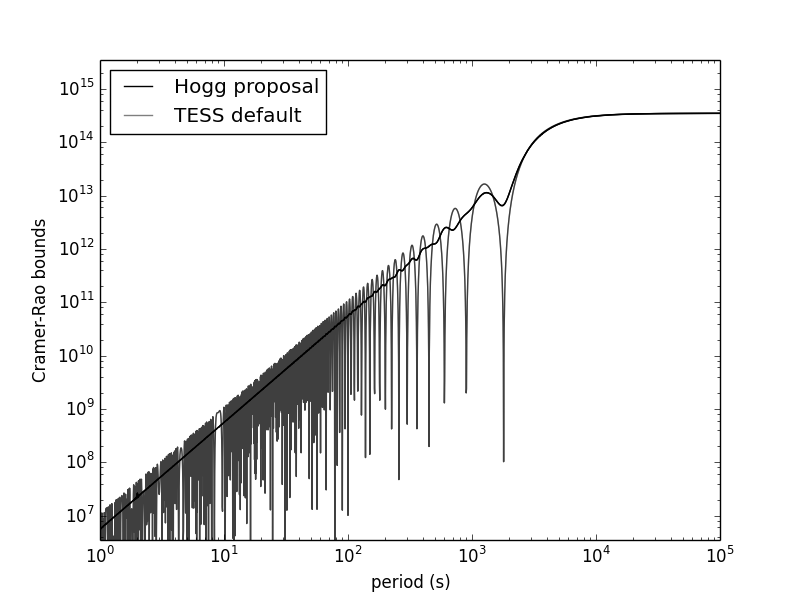[OMG I have been behind on posting. I will catch up this weekend (I hope).]
I have been batting around for years the idea of writing a paper about varying the exposure times in a survey. Typically, I have been thinking about such variation to test the shutter, look for systematics (like non-linearity) in the devices, extend dynamic range (that is, vary the brightness at which saturation happens) , and benefit from the lucky-imaging-like variation in the point-spread function. For all these reasons, I think the LSST project would be crazy to proceed with its (current) plan of doing 15+15 sec exposures in each pointing.
Recently, in conversations with Angus and Foreman-Mackey, I got interested in the asteroseismology angle on this: Could we do much better on asteroseismology by varying exposure times? I came up with a Cramér–Rao-bound formalism for thinking about this and started to code it up. It looks like a survey with (slightly) randomized exposure times vastly outperforms a survey with uniform exposure times on many fronts. Here's a plot from the first stab at this:

No comments:
Post a Comment